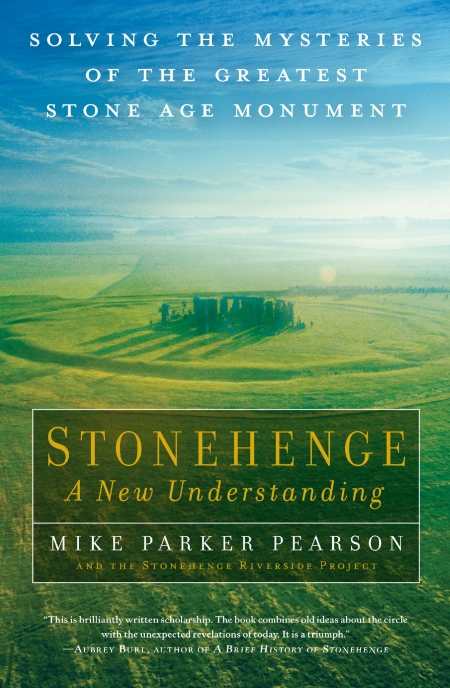Stonehenge—A New Understanding
Solving the Mysteries of the Greatest Stone Age Monument
Revealing book by archeology professor excavates meaning of Stone Age monuments.
This book grows out of excavations Mike Parker Pearson and his teams made in and around Stonehenge from 2003 to 2009. A professor of archeology at the University of London, the author was intent on discovering how the famous circle of stones on Salisbury Plain in southern England might have related to other time-obscured Stone Age sites in the area. What preceded the construction of Stonehenge as it stands today? What were the purposes behind the Herculean labors required to build it?
“In archaeology,” Pearson writes, “context is everything. As a rule, an artefact or a monument studied in isolation is out of context and as such any interpretation of it will always be partial and flawed. If we can understand a monument in terms of what it related to, who made it, how they lived, and what else they did, we stand a better chance of understanding the thing-in-itself as a product of wider forces.”
Pearson began his explorations at the Durrington Walls site, two miles away from Stonehenge. There he discovered the remains of a large settlement and an “avenue” that once connected it to the River Avon—just as Stonehenge had been. No such settlement was found at Stonehenge. But excavations there turned up sixty-three burial sites of cremated human remains. This leads Pearson to conclude that Stonehenge was constructed—in various stages over centuries, starting at around 3000 BC—as “a place of the dead … not as a unique site but rather as one of several enclosed cremation cemeteries well known across Britain.” The people buried there were the socially elite, he speculates, and the monument, because of the immense, varied, and long-continuing resources that went into it, probably served as a unifying element for the tribes of southern Britain.
As to why Stonehenge was built where it was, Pearson points to geological features in the landscape that just happened to be aligned with the solstice axis, thereby endowing the location with cosmological significance. Because the author cites dozens of digs and scientific analyses—many of which lead to various interpretations—this is a difficult book to summarize without risking oversimplification. Fortunately, Pearson writes in an accessible, easy-to-follow style and provides an array of helpful diagrams, reconstruction sketches, and photographs.
Revealing as his conclusions are, he does not shear Stonehenge of such abiding mysteries as how Stone Age people could quarry, transport, finish, and lift into place such massive weights with such primitive technology. Like all modest scientists, he concedes that there is still a lot of digging left to do.
Reviewed by
Edward Morris
Disclosure: This article is not an endorsement, but a review. The publisher of this book provided free copies of the book to have their book reviewed by a professional reviewer. No fee was paid by the publisher for this review. Foreword Reviews only recommends books that we love. Foreword Magazine, Inc. is disclosing this in accordance with the Federal Trade Commission’s 16 CFR, Part 255.

